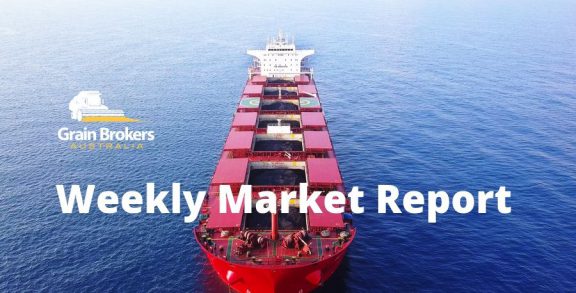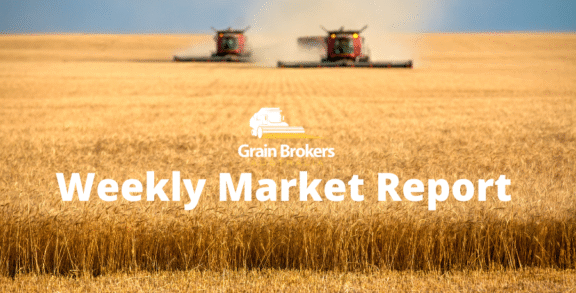
The Australian Bureau of Statistics released their July export data last week and the grain numbers undoubtedly reflect the effects of last year’s drought and the many dilemmas for Australian exporters this year.
Wheat exports for July came in at 737,000 metric tonne (MT). This was up from the June number of just 585,000MT but well down on the 1.227 million metric tonne (MMT) exported in May, the biggest wheat export month of the current marketing season (October 2018 to August 2019).
Not surprisingly, Western Australia and South Australia accounted for almost the entire volume, shipping 494,000MT and 216,000MT respectively. The balance of 27,000MT were container shipments from east coast (Queensland, New South Wales and Victorian) ports.
In terms of destinations, Yemen, Vietnam and Japan were the biggest in July taking 113,000MT, 109,000MT and 83,000MT respectively. In June it was the Philippines, followed by South Korea and Japan with 216,000MT, 86,000MT and 81,000MT respectively.
Year-to-date wheat exports now stand 7.457MMT with 57 per cent, or 5.286MMT, shipped in the January 2019 to June 2019 window. Western Australia made up the lion’s share of Australia’s wheat production last year, and at a pinch under 6MMT, the state accounts for more than 80 per cent of national wheat exports this season.
South Australian wheat shipments stand at 1.102MMT since the beginning of October last year or around 15 per cent of national wheat exports. Total east coast wheat exports for the marketing year stand at just 355,000MT. The majority of that volume went out in containers, with Victoria accounting for 194,000MT, New South Wales 102,000MT and Queensland 60,000MT.
Exports of barley in July totalled 209,000MT, almost double the June shipments 113,000MT, with Western Australia making up more than 99 per cent of that volume. Malting barley made up 39 per cent of the July exports, and feed barley made up 61 per cent.
Japan was the biggest importer of Australia barley in July with 105,000MT shipped, followed by China at 62,000MT. This was the opposite of June, where China was the primary destination at 53,000MT, followed by Japan on 51,000MT.
Total exports of barley for the 2018/19 marketing year stand at a healthy 3.459MMT. December 2018 is the biggest month thus far at 1.107MMT, more than double the next closest month. The split between malting barley and feed barley is almost equal with 1.751MMT exported as malting and 1.708MMT exported as feed.
Western Australia has exported 3.143MMT of barley this season, almost 91 per cent of total Australian barley exports. At 279,000MT South Australian exports make up most of the balance, and Victoria has chimed in with 37,000MT of containerised trade.
Interestingly, China has been the biggest destination for Australia barley in the October 2018 to July 2019 window. They have taken 2.231MMT, or almost 71 per cent of total Australian barley trade to international clients. This is despite the ongoing anti-dumping investigation, which appears no closer to a resolution.
The investigation commenced in November last year, and the final decision of the twelve-month inquiry is due in November this year. However, Beijing can extend the investigation by a further six months, to May 2020, if they feel it is required.
While the potential outcomes remain uncertain, it appears that the Chinese government have their hands full on other fronts and are happy to let market speculation and confusion reign in the Australian market until a decision is announced.
On the canola front, July exports totalled 39,000MT, with one 33,000MT cargo loaded out of Western Australia and small parcels of container business out of both Victoria and South Australia.
Marketing season canola exports currently total 1.447MMT, with 79 per cent shipped from Western Australian ports and 14 per cent from South Australian ports. The balance of 7 per cent or 95,000MT were exported from Victoria with one bulk vessel in March and the rest via container trade across the season.
With a run of poor sorghum crops in northern New South Wales and Queensland, sorghum exports total a paltry 62,000MT for the first ten months of the marketing season. This is well behind last year and a long way short of the record 1.6MMT exported in 2013/14.
Last year may have been bad, but this season’s production outlook is not looking any better as the late winter dry continues into the spring. There are good pockets in most states, but widespread rains are required now, and then follow up falls for at least the next month to arrest the deterioration.
Australia has lost significant market share and relevance as a global wheat exporter as a result of last year’s drought and the considerable fall in the continent’s exportable surplus. A repeat of last year is a free leg up for the likes of Argentina and the Black Sea origins who have filled the void into Australia’s traditional Asian wheat consumers.
We have even seen export values out of both regions fall in recent weeks as the plight of the 2019 Australian harvest gets factored into global supply and demand calculations. One thing is for sure, winning back that business in the face of similar competition will not be easy when Australian production recovers.
Call your local Grain Brokers Australia representative on 1300 946 544 to discuss your grain marketing needs.





